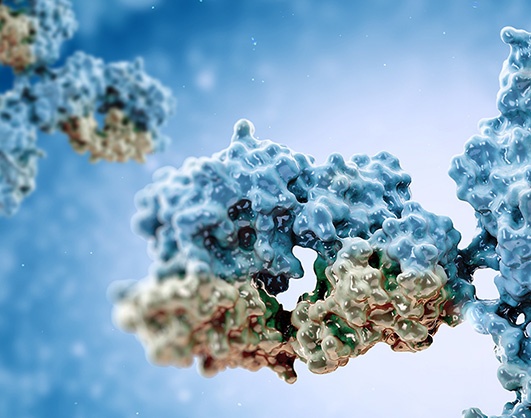Creating highly productive cell lines requires a great level of care that starts with cell line development. Inotiv’s Rook Khajenouri and Richard Drucker understand the challenges customers face throughout the process. They recently discussed some common production problems and offered solutions for ensuring consistent and reliable results that enhanced antibody production.
 Tip 1: Maintain sample integrity
Tip 1: Maintain sample integrity
The most basic, preventable issues with antibody production deal with cell storage temperatures and contamination.
Improper storage of samples in facilities and during shipping between facilities can cause temperature fluctuations that can stress the cells. Stressed cells can greatly hamper antibody production, requiring intensive efforts to get cell lines back up to optimal production levels. Strict control of samples during shipment can help ensure the optimal temperature is maintained both from facility-to-facility, and within the process.
Contamination with mycoplasma and other adventitious agents has become less of an issue over the last 30 years, but it still remains a problem. It isn’t always obvious when contamination occurs, but once the cell culture begins to deteriorate it can greatly affect production by altering the behavior and metabolism of the cells. Well-documented laboratory procedures (including any partner laboratories), the purchasing of tested media and supplements from reputable sources, along with proper segregation of cells and equipment can all help to minimize the potential for contamination.
Tip 2: Verify and document for higher returns
With ongoing mergers and buyouts of companies, clones are often sold, inherited or passed on but may lack a complete chain of custody. A viable cell line may, therefore, have great promise and commercial potential, but little is typically known about its development and history.
Given that biological systems don’t always perform as anticipated and may have unpredictable manufacturing behavior, companies need to ensure that they are continually capturing the necessary documentation and verifying that their clones meet expectations. Keeping and maintaining complete records can help avoid downstream issues during production and help keep timelines on track.
Tip 3: Promote downstream production with patience
Some cell lines are initially developed quickly to answer a research question for a short-term project. Then, over time, the cell line becomes valuable and is evaluated for its commercial potential. But if cells were created rapidly or chosen improperly to ensure optimal production, their yield may be compromised. In this case, the cell line will require a lot of extra time and effort to perform optimally, or the client will be left with a cell line that may increase their production costs.
In these cases, patience in the laboratory is a true virtue. Inotiv recommends from the very start that scientists allow for the time necessary to develop their lines and proactively plan for a long-term strategy for the cells. Knowing that a cell line may eventually be commercialized will help drive development and can help select the right development partners that are capable of quickly scaling up to production levels.
Tip 4: Assess the attributes of a potential development partner
When selecting a partner to help develop your antibodies, it is important to consider their history, flexibility, and capacity. A company with proven track record should have proper quality assurance controls and SOPs in place. Ask for documentation that shows their ability to reproduce processes that will ensure consistency.
Flexibility is another factor that may influence your decision making. Some development partners require that their clients follow strict internal protocols, while others are able to offer a custom process that is flexible and can adjust to the client’s specific needs.
Capacity is also important, particularly on the in vivo side, to ensure a project can scale up quickly. Many companies can handle a few one-time or small projects but when it comes to labor-intensive projects that need ready access to specific animal models, you need a partner that can quickly meet demand.
Tip 5: Build strong, ongoing communication
Once a development partner is selected, it’s important to share as much information as possible upfront. Let your partner know the ultimate goal for the product. For example, is this production just a pilot for feasibility? Is this for a product that will eventually be scaled up to meet market demands? Will this become a licensed product that requires cGMP or other specific regulatory requirements? These details help the development partner design for scalability and prepare to gather crucial data needed for downstream submissions.
Timely, proactive communication is also needed from the development partner to keep their clients informed of any issues as well as progress. For example, if a client is expecting purified material in 6-8 weeks but the development partner is observing issues with the material, they need to quickly report any issues and manage the client’s expectations.
Custom antibody production will always have its challenges, but with a proactive strategy in place to avoid common pitfalls, you can increase your chances for success. You can also learn more by reading other real life success stories to help you determine what your antibody products should look like.
Depending on the ultimate application of your antibody, one should begin with an open-mind and give consideration to whether polyclonal or monoclonal antibodies are the best fit for your application.
Read more in our white paper: Antibody Optimization



